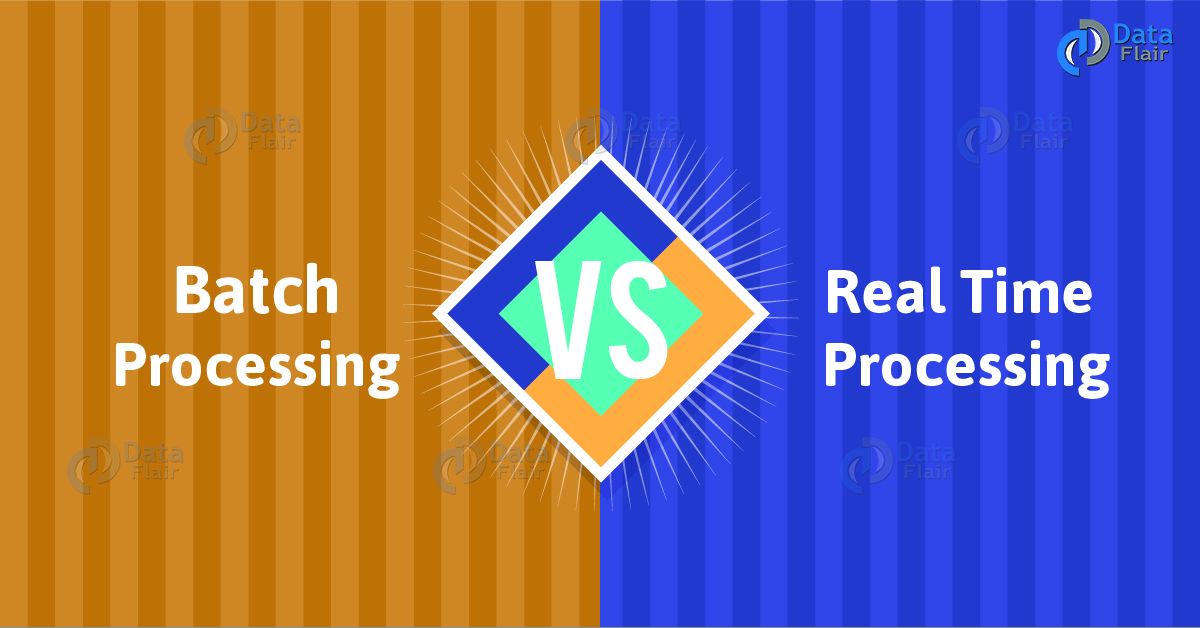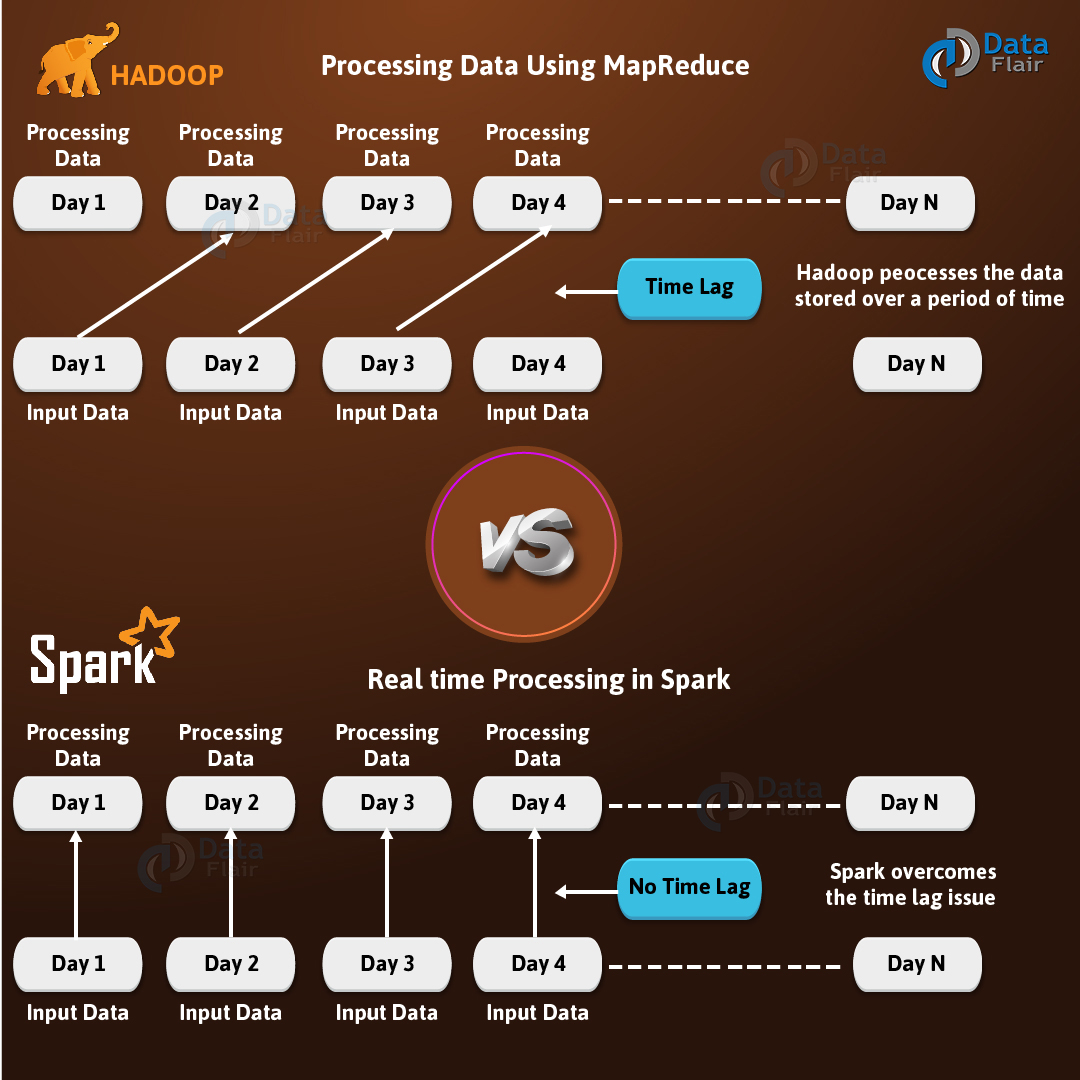Batch Processing vs Real Time Processing – Comparison
1. Objective
While applying several spark operations on data to transform, classify information is “data processing”. Basically, there are two common types of spark data processing. Such as Batch Processing and Spark Real-Time Processing. In this blog, we will learn each processing method in detail. Also, learn the difference between Batch Processing vs Real Time Processing. We will also mention their advantages and disadvantages to understand in depth.
2. Batch Processing vs Real Time Processing
Let’s start comparing batch Processing vs real Time processing with their brief introduction. We will also see their advantages and disadvantages to compare well.
a. Batch Processing
An efficient way of processing high/large volumes of data is what you call Batch Processing. It is processed, especially where a group of transactions is collected over a period of time. In this process, At first, data is collected, entered and processed. Afterward, it produces batch results. We can say Hadoop works on batch data processing. For input, process, and output, batch processing requires separate programs. Payroll and billing systems are beautiful examples of batch processing.
Let’s understand batch processing with some scenario. While sales team/employees would gather information throughout a specified period of time. Afterward, all that information would be entered into the system all at once. This whole procedure is known as Batch Processing. Generally, it works for printing shipping labels, packing slips and payment processing. In other words, this method also means waiting to do everything at once. Also, it means relying on the ability of your system to handle it all.
We can say, the batch processing system
- Batch processing access to all data.
- It might compute something big and complex.
- Generally, it is very concerned with throughput. Rather than the latency of individual components of the computation.
- Batch processing has latency measured in minutes or more.
i. Advantages of Batch Processing
- Batch Processing is Ideal for processing large volumes of data/transaction. It also increases efficiency rather than processing each individually.
- Here, we can do processing independently. Even during less-busy times or at a desired designated time.
- For the organization by carrying out the process, it also offers cost efficiency.
- Also, allows a good audit trail.
ii. Disadvantages of Batch Processing
- The time delay between the collection of data and getting the result after the batch process.
- In the batch processing master file is not always kept up to date.
- Here, a one-time process can be very slow.
b. Real-Time Processing
Real-Time Processing involves continuous input, process, and output of data. Hence, it processes in a short period of time. There are some programs which use such data processing type. For example, bank ATMs, customer services, radar systems, and Point of Sale (POS) Systems. Every transaction is directly reflected in the master file, with this data process. So, that it will always be up-to-date.
If you want analytics results in real time, Spark Real-Time processing is key. We can feed data into analytics tools, by building data streams, as soon as it is generated. Moreover, it gets near-instant analytics results by using platforms like Spark Streaming.
In addition, for tasks like fraud detection, real-time processing is very useful. Basically, if process transaction data, we can detect that signal fraud in real time. Also, can stop fraudulent transactions before they take place, through real-time processing.
We can say, the Real-Time processing system
- Real-Time processing helps to compute a function of one data element. Also, can say it computes a smallish window of recent data.
- Real-Time processing computes something relatively simple
- While we need to compute in near-real-time, only seconds at most, we go for real-time processing.
- In real-time processing, computations are generally independent.
- They are asynchronous in nature. It means a source of data doesn’t interact with the stream processing directly.
i. Advantages of Real-Time Processing
- While performing real-time processing, there is no significant delay in response.
- In real-time processing, information is always up to date. Hence, it makes the organization able to take immediate action. Also, when responding to an event, issue or scenario in the shortest possible span of time.
- It also makes the organization able to gain insights from the updated data. Even helps to detect patterns of possible identification of either opportunities or threats.
ii. Disadvantages of Real-Time Processing
- Real-Time processing is very complex as well as expensive processing.
- Also turns out to be very difficult for auditing.
- Real-Time processing is a bit tedious processing.
So this was all in Batch Processing vs Real Time Processing. Hope you like our explanation.
3. Conclusion – BatchProcessing vs Real Time Processing
Did we exceed your expectations?
If Yes, share your valuable feedback on Google




I really like reading your blogs on different tools and technologies. Your content is easy to understand. It has really helped me to grow my skillset on upcoming Big data tools and technologies. One suggestion I would like to give for your blogs, If you could provide links for Next Page and Previous Page at the end and/or on top then it would make easier for users to move from one page to another. Sometimes when you are at the end of the page then to select the next page or previous page from scroll bar is difficult. Also, On scroll bar, it doesn’t highlight which page you are reading.